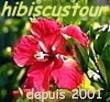-

"hibiscustour", three separate sites -
Islands and lagoons New Caledonia, Polynesia (part). -

Curiosity. Things, amazing, science, society.. -

Ideas perso. Household, Practical life, D.I.Y, Computering..
 
but reality |
  |
|
ON THE GROUND One can walk naked feet everywhere if one wants : there are no snakes nor of scorpions ! There is a scolopendre well, but where he lives, you will walk with shoes (forest, bush). On the lawn at the edge of water, be quiet, but as everywhere (including in Metropolis) avoid stagnant water in the shade - Unfortunately there arecockroaches ! but they generally are "treated" in Noumea, as well in private houses. Therefore, they are still there and when the pulverization car runs, they sometimes be fleeing inside as we could see on the inside wall of our hotel !
- Unfortunately, there are ants
"electric ant" or " "honey ant" for its color, in New Caledonia and "small ant of fire" in
Tahiti/Polynesia (Wasmannia auropunctata), whose bites are painful ; it is said as "awkward" and it's progression is watched.
IN THE GREAT SOUTH : the south of Nouméa consists of vivid yellow-red iron chromium, in the shape of small grains extremely rolling and cutting. Car Hirers prohibit to leave the roads tarred because of the indelible colour which is likely to mark the cars |
ON THE OPEN AIR - Unfortunately there are mosquitos, but they generally are "treated" in Noumea, as well in touristic areas. However, in the nature, they could be terrible; Experienced : We never were inconvenienced, even at the sunset, at Noumea, Papeete, Bora. We perhaps had chance. If you travel by night in the "bush", or in less touristic islands, take precautions (I remember a breakdown the night in a pass who left us a burning memory, fortunately without incidence for health).
IN THE SUN.
Islets ("îlots", or "motu" in Polynesia).
Small islets.In New Caledionia, they generally have a superb vegetation but rather short and they won't offer any shelter from the sun. Don't forget at least your caps and either your sun tan cream ; keep coating thick every three hours at the beginning. Amid the sea, the sun is reflected from everywhere, even in the shade. A towel could be appreciated to covers back and arms. If you want being enjoying your stay there, don't care of others people. You would avoid staying at home suffering |
 Illness : dengue (mosquitoes),
nono (sand
flies), ciguatera or gratte, in french (fishes). Illness : dengue (mosquitoes),
nono (sand
flies), ciguatera or gratte, in french (fishes).Practically no really frightening disease in PAPEETE, Nouméa, nor elsewhere. In Nouméa, the mosquitoes are treated by vaporisation in the streets. The hot and wet season is more favourable to these small animals, which are are particularly annoying just after nightfall. In the "bush" and in some islands or "motu", it is better to protect oneself against mosquitoes with a repellent and a mosquito coil. There are also "nono", but only in two Marquesas islands and in a few Tuamotu islands (could be terrible). |
The news : New Caledonia, July 2001: the media announced that a significant number of people have contacted the "dengue" (see "WORDS at "dengue"), of which some
seriously. Is it an evolution ? this illness is told an emergent one (spreading slowly). But don't worry too much in
touristic area.
The last epidemics made some deaths, in Polynesia as in New Caledonia (for this last case, the dengue made several deaths in April 2003, especially in the north of the territory, but tourists are not concerned in theory ; click above on "Dengue" The frightening "gratte" (=ciguatera)>, is very rare : prohibited fish species of fishing, hygiene and freezing have reduced the risk. One treats it with antibiotics I believe. The disease comes from certain algae which cover the died corals, after having passed by fish, either directly, or by their predatory. If any sudden fever, itching, sensitivity to water occurs, consult without delaying, even after your return. |

 even much more due to the reefs that are rather frightening.. : be wary of the tides because with one meter less, you won't come back or crash. Learn well marines maps and enquire near
competent person.
even much more due to the reefs that are rather frightening.. : be wary of the tides because with one meter less, you won't come back or crash. Learn well marines maps and enquire near
competent person.
First of all check out both the fuel level and the engine : I'm not kidding, the failure is more frequent than one could think
Two engines is more reassuring. |
Hold the "cones Collect it by the larger part, the tip well pointed in front of you because some can launch tiny but frightening poisoned stinger, just like the corals themselves. And do not put them in your pants ! By the way, let also alone the muraena, the fish surgeon, lion fish.. Nothing will jump to your face because all animals flee initially if you do not drive back them. The katuali sea-snake, called "tricot rayé" (stripe knitting) in New Caledonia is part of them. Preferably put on a diving suit with hood (because of the jellyfishes with long poisonous filaments (physalias); I felt once of them but it was light: a friend of me was badly stroke on its back, half paralysed and panicked. Fortunately, he was "paddling" in the good direction, towards the shore. BE WARY OF THE
CURRENTS ESPECIALLY CLOSE TO THE CHANNELS (PASSES) The tide plays a determining role in the force and direction of the streams in the pass. Before venturing there, enquire also after the shift of the tides according to the place ! |
- Information
- Hints, experienced
